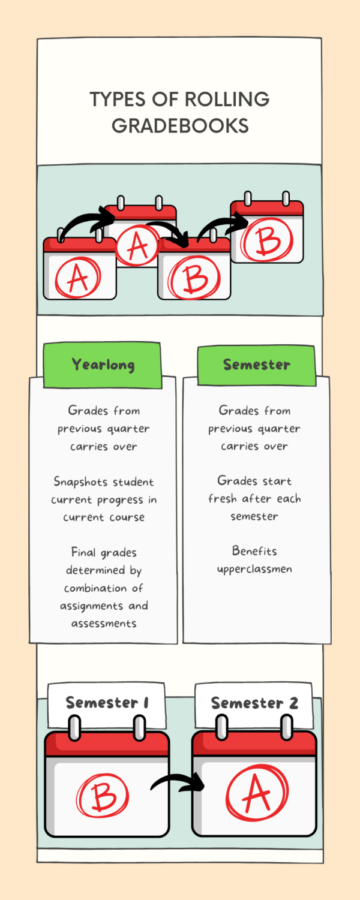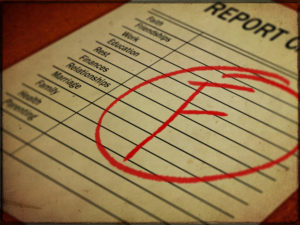Rolling gradebook should lower stress among students
Comparing two designs based off of the rolling gradebook.
January 25, 2023
It’s the final semester, pencils dropped and students are walking out ending their school year. Not worrying about their final grades because they know that they have passed their classes. Using the rolling gradebook method, it allowed students to determine their current progress in that course. The rolling gradebook was established to allow flexibility and equitable grading practices for students during long distance learning according to the Rolling Gradebook Overview, given the uncertainty events and schedule changes of distance learning back in 2020-2021.
There are three types of gradebooks that have been used over the last few years: the traditional quarterly gradebook, the yearlong rolling gradebook, and the semester rolling gradebook. Three years ago schools in the district of Fairfax County Public Schools (FCPS) used the traditional quarterly gradebook. The quarterly gradebook has four grading periods that all have an equal impact on the final course.
For the last two years, CHS used the yearlong gradebook. Based on this grading design by FCPS, a yearlong gradebook, cumulative gradebook, is when the final grades are determined by the combination of all assignments and not the calculation of quarter-end grades.
This year, CHS is using the semester rolling gradebook. The semester rolling gradebook is when grades from each quarter are carried over and built upon from the previous one, but reset every semester or every two quarters.
The semester rolling gradebook is really helpful in this current year because the benefits of using one helps maintain a positive mental health for students and reduces the number of tests or any large projects due at the same time over multiple different classes or at the end of any quarter. For example, while a student struggled in the first quarter with a D (67%), the grades earned for the second quarter were higher at a B+ (89%). However, because the first quarter took a while to get going, there were 200 pts in the first quarter and 350 pts in the second quarter. Using a semester gradebook, their semester grade would be a B- (81%). Using a quarter gradebook, their semester grade would be a C+ (78%).
This can benefit upperclassmen that take AP classes or ones that teach classes. While using a semester rolling gradebook is helpful for students’ mental health, it can also help with balancing out their grades. If a student receives an average score of an A (93%) in the first semester and does poorly in the second semester with an average score of a B- (82%), the first semester can help balance out with the grade given in the second semester or final, the average will be a B+ at an percentage of 87.5%.
By examining the different designs of a rolling gradebook, the semester gradebook can balance out students’ grades, therefore gradebooks should lower the stress in students.





